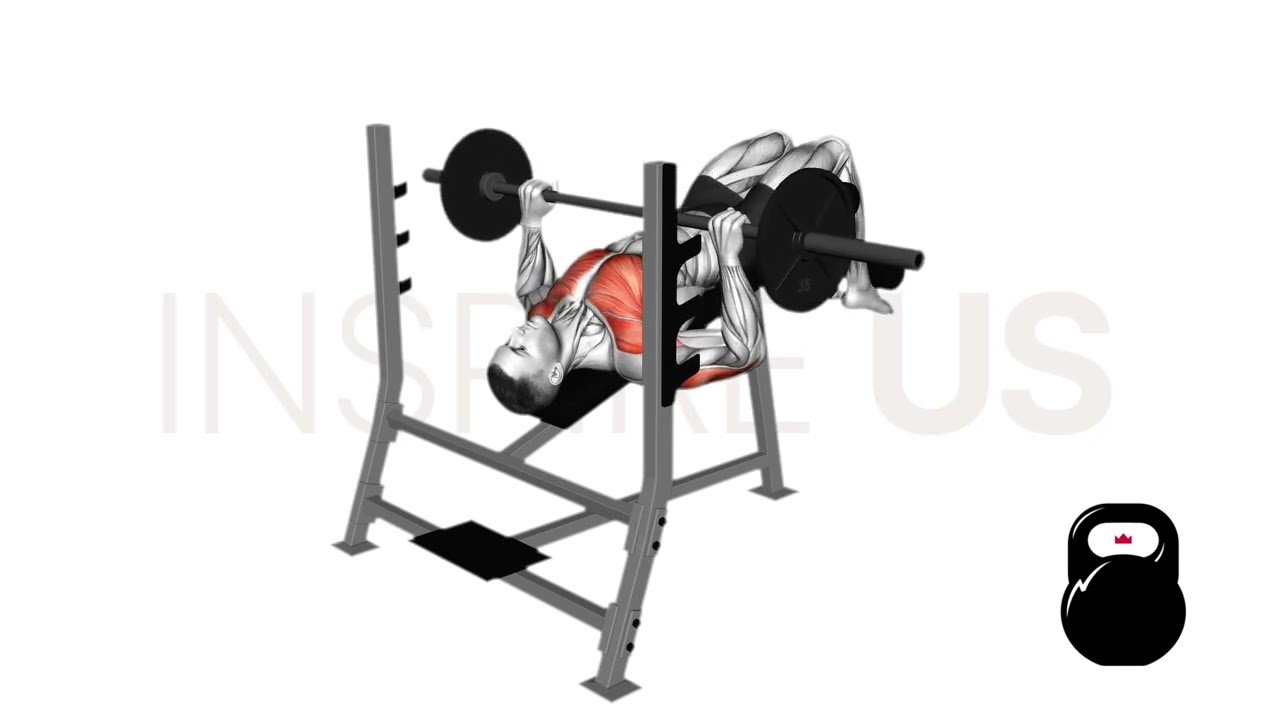Barbell Decline Bench Press: Benefits, Muscles Worked, and More
The decline bench press is classified as a multi-joint free weight exercise with a closed chain movement pattern.
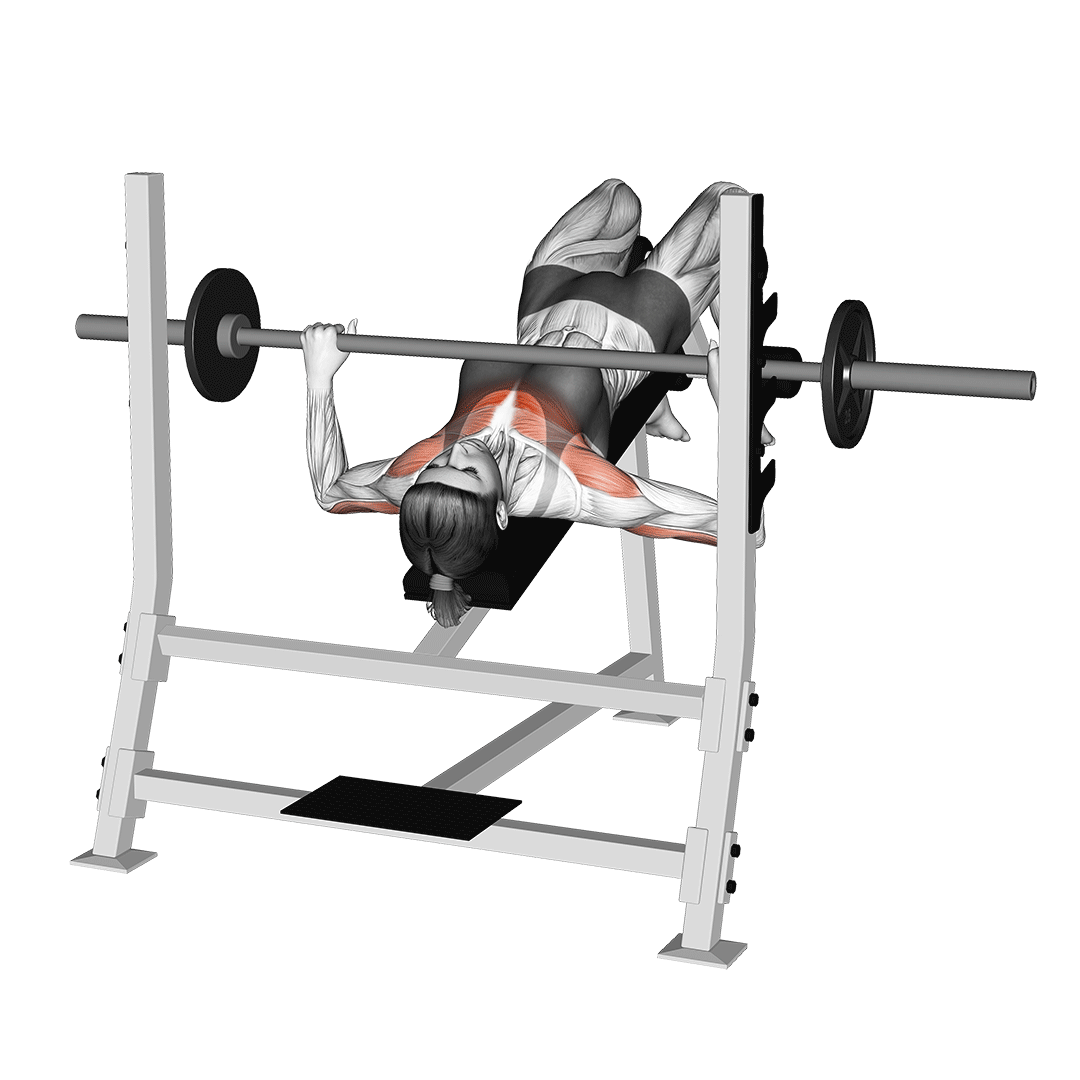
When programmed, it is primarily performed between the low-moderate volume ranges of 5-16 repetitions per set, and is loaded with a moderate to heavy amount of weight.
The decline bench press is often compared to the flat or incline bench press, as all three target much the same general muscles and involve a similar movement pattern. Unlike the latter two exercises however, the decline bench press angles the torso towards the ground.
This change in orientation effectively shortens the range of motion, allowing for more weight to be lifted and shifting greater emphasis to the lower pectoral muscles.
Is the Decline Bench Press the Right Exercise for You?
The decline bench press may feel unfamiliar and precarious for individuals with lesser training experience. As such, the decline press is better suited to lifters of at least an intermediate level or greater.
In particular, bodybuilders who lack lower chest definition - or powerlifters wishing to acclimatize to heavy bench press loads - will see the most benefit from this exercise.
How to do the Decline Bench Press Correctly
To perform a repetition of the decline bench press, the bench must be set at an angle of 15-35 degrees. The lifter will lie chest-up atop the bench, hooking their feet into the padded safeties if available.
Once safely atop the bench, the lifter will retract their shoulder blades beneath their torso and place their hands slightly wider than shoulder-width apart along the barbell.
Unracking the bar, the repetition begins with the lifter slowly lowering it towards their chest, bending at the elbows but keeping them from spreading out to the sides.
Once the barbell touches their chest, the lifter will push through their palms and contract their pectoral muscles - raising the bar back to its original position over their chest. From this point, the repetition is considered complete.
Note that the touch point of the decline press will be somewhat lower along the torso than with its flat or incline counterparts. This may take some getting used to, and additional focus should be directed towards ensuring the elbows are aligned correctly.
What Muscles Does the Barbell Decline Bench Press Work?
The barbell decline bench press is a compound exercise - which means that multiple muscle groups will be worked throughout its movement pattern.
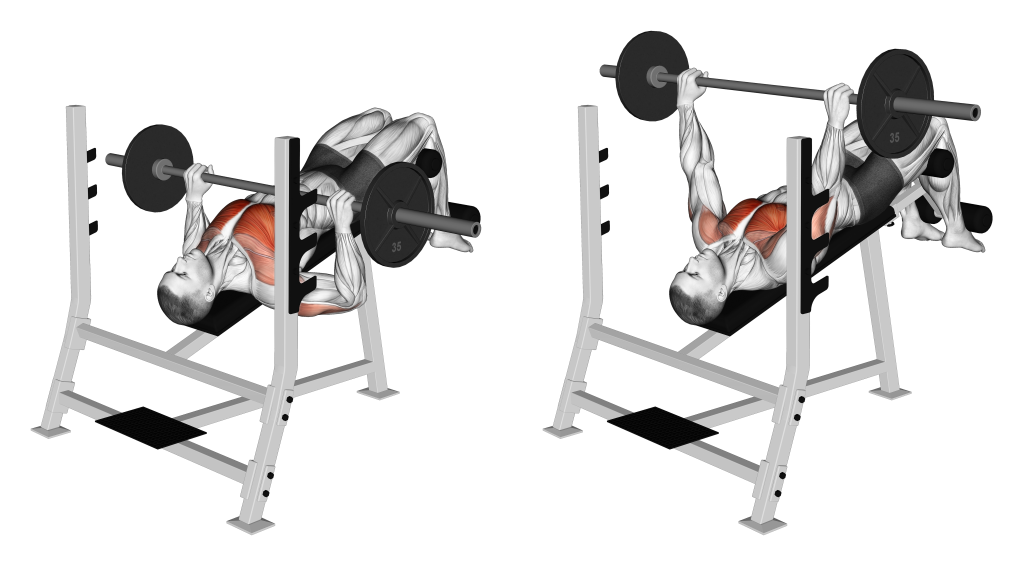
These muscles are divided according to their role within the exercise, with mover muscles displaying dynamic contraction and stabilizer muscles displaying isometric contraction.
Mover Muscles
During a repetition of the decline bench press, it is the triceps brachii, biceps brachii, anterior deltoid head and the pectoral muscles that are worked the most. In particular, the lower section (sternocostal head) of the pectoralis major receives the most benefit.
Stabilizer Muscles
In terms of isometric contraction, the serratus, medial and rear deltoids are used.
What are the Benefits of Doing the Decline Bench?
The barbell decline bench press is most effective when used as a tool to achieve the following benefits.
Excellent for Building Lower Pecs Mass and Strength
The primary and most easily achieved benefit of the decline bench press is its capacity for lower pectoral development.
Although the entirety of the pectoral muscles are recruited as a single unit, greater stress is placed along the lower section of the pectoral muscles - namely the sternocostal head - leading to greater development therein.
This functions in the vein of both hypertrophy and strength development, depending on how the decline bench press is programmed.
Greater Loading Capacity
While not a widely-applicable benefit, the shorter range of motion of the decline bench press equates to an opportunity for greater weight to be loaded.
This can be especially useful for powerlifters or other strength-focused individuals that wish to maximize the amount of resistance of each repetition, and all the benefits that come with greater resistance.
Of course, remember not to lift more than you are safely able.
Less Strain on Back
The flat bench press involves maintaining some level of lower back arch in order to protect it and aid in performing the exercise. While this is unlikely to result in injury, it does create a small amount of strain that individuals with poor mobility may struggle with.
Fortunately, because the body is at a decline angle, the decline bench press does not suffer from the same disadvantage.
Synergizes With Most Chest Exercises
Because the majority of chest exercises underutilize the lower section of the pectorals, the decline bench press is particularly effective when performed alongside these exercises.
For an especially comprehensive chest workout, try performing the decline bench press for several sets before following up with the incline bench press.
Common Decline Barbell Bench Press Mistakes
In order to avoid injury and ensure the decline bench press is effective, avoid the following mistakes.
Excessive Internal Shoulder Rotation
While this particular mistake is largely corrected by pinning the scapula beneath the back (as with all bench press variations), it is a particularly common error with the decline press and due care must be taken.
The entire stance of the decline barbell bench press makes the lifter susceptible to excessive internal shoulder rotation. Because of this tendency, it is important for lifters to ensure that their shoulders do not bend forwards as they press the barbell back upwards.
One good cue to check for incorrect shoulder rotation is to push the chest outwards while drawing the shoulders back. If the shoulders are rising forwards, reseating the shoulder blades beneath the torso may be needed.
Splaying Elbows Outwards
Regardless of bench press variation, allowing the elbows to spread out to the sides can jeopardize the shoulder joint and otherwise greatly reduce how much weight can be lifted.
In order to ensure that the decline bench press is performed safely, the elbows should remain close to the sides of the torso, and tuck near to the ribs during the deepest point of the repetition.
Bar Touch Point is Too High
Because the torso is angled towards the ground, lifters more used to a flat bench press may feel the need to keep the same bar touch point along their chest. This is not entirely necessary, and can make maintaining the correct stance more difficult than it needs to be.
So long as the bar is touching a spot on the torso that is between the diaphragm and below the clavicles, having a different bar touch point is entirely normal
Curved Bar Path
With a comparatively shorter range of motion and altered orientation, the bar path of the decline bench press is somewhat more linear than other bench press variations.
The barbell moving through a curved path can indicate that the lifter is not adequately stabilizing the movement, or that they simply need more practice with the exercise itself.
Barbell Decline Bench Press Alternatives
Don’t have a decline bench - or just want to try something new? Check out the following decline bench press alternatives.
Weighted Chest Dips
For a more dynamic exercise that shares a similar emphasis of the pectoral muscles, the weighted chest dip is the best alternative.
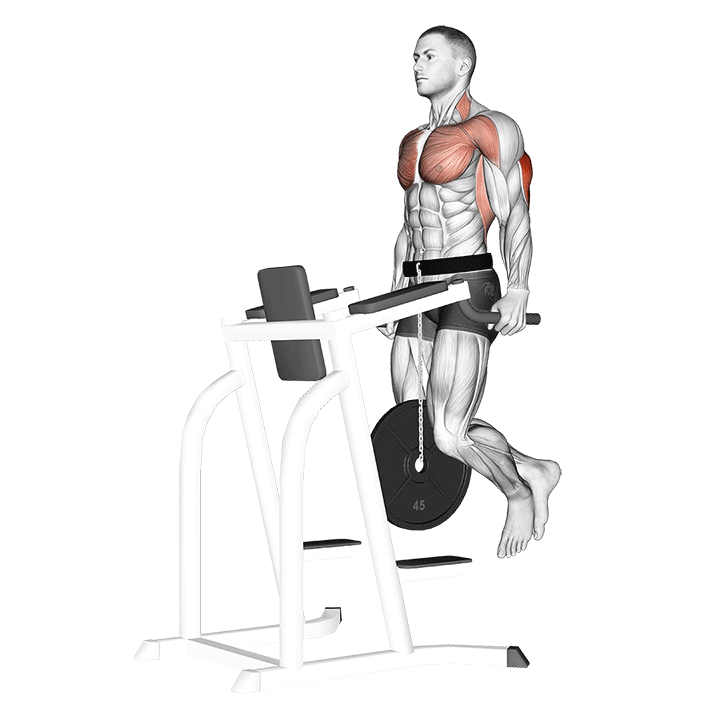
Unlike the decline bench press, the weighted chest dip involves the lifter suspending themselves between a pair of parallel bars. The weighted variation requires a dip belt or similar wearable weighted equipment, and is comparable to the decline bench press in terms of intensity.
Floor Presses
If you’re performing the barbell decline bench press for its loading capacity - try out the floor press.

As you can guess by the name, the floor press is simply a regular bench press performed as you lie on the floor. This creates a similarly short range of motion to the decline press without the same disadvantages of being in a semi-inverted orientation.
Low Cable Chest Flys
The low cable chest fly serves as the perfect alternative for lifters seeking less impact and a lower level of intensity.
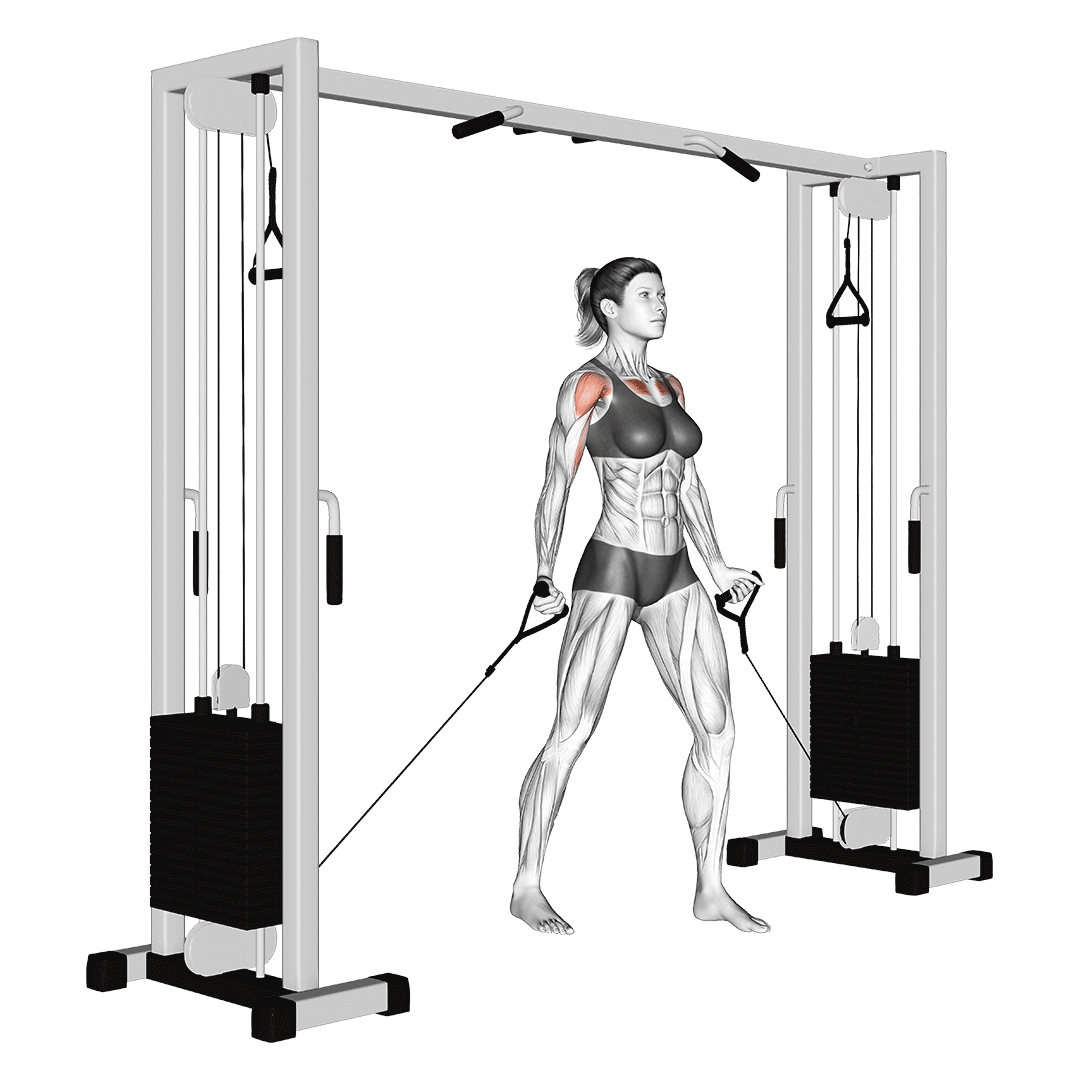
This particular decline bench press alternative is simply a conventional cable fly with the pulleys set as low as possible.
With the angle of resistance angled in such a way, there will be greater emphasis on the lower portion of the pectoral muscles - all without the same risk of injury or difficulty of the decline press.
Frequently Asked Questions (FAQ)
What is the Correct Decline Bench Press Angle?
Although it varies between clinical reviews, most agree that somewhere between 15 and 35 degrees is ideal for lower pectoral muscle activation.
Is Decline Bench Better Than Conventional Bench?
In a few key aspects, yes.
The decline bench is better at building lower chest definition and mass, but loses to the flat bench for most other training purposes.
Ideally, one should combine the decline bench with another chest exercise that makes up for its deficits.
Why is the Decline Bench Unpopular?
The decline bench’s unpopularity is largely attributed to its inability to work the entirety of the pectoral muscles.
While it does indeed allow for superior loading and greater targeting of the lower chest, the flat and incline bench press work the upper and middle chest to a greater degree.
A Few Reminders
As effective as the decline bench press is, remember that it is situational in its usage. Ensure that you are performing other exercises that work the remaining sections of the pectorals to a similar extent.
In addition, keep in mind that just because you can lift more weight with the decline bench, it doesn’t mean you should. Keep your working load to a reasonable level in order to avoid injury.
If you’re unfamiliar with the decline bench press - or any other exercise - it is a good idea to seek out the advice of a professional coach.
References
1. Glass S.C., Armstrong T. Electromyographical activity of the pectoralis muscle during incline and decline bench presses. J. Strength Cond. Res. 1997;11:163–167. doi: 10.1519/00124278-199708000-00006.
2. Jakob D. Lauver, Trent E. Cayot & Barry W. Scheuermann (2016) Influence of bench angle on upper extremity muscular activation during bench press exercise, European Journal of Sport Science, 16:3, 309-316, DOI: 10.1080/17461391.2015.1022605

